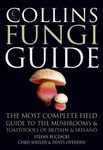![Ecology and Evolution of Black Yeasts and Their Relatives Ecology and Evolution of Black Yeasts and Their Relatives]()
Click to have a closer look
About this book
Customer reviews
Related titles
About this book
Black yeasts are already known since the end of the previous century, but still only few workers are familiar with them. One of the reasons why the knowledge on these organisms lags far behind that on genera such as Aspergillus or Candida may be the slow growth and low competitive ability of the majority of the species; hence they are easily overlooked in routine studies. In addition, they are notoriously difficult to identify morphologically. The conidial structures of most species show poor differentiation and may be highly variable in shape and size; many taxa exhibit a bewildering polymorphism of synanamorphs. Morphological identification has longtime remained esoteric and intuitive and often unconvincing to the user. Introduction of experimental techniques in order to achieve more taxonomic objectivity has become over due.
Among the first non-morphological techniques applied were nutritional physiology and serology. These methods have gained only limited recognition and application. Results were often disappointing, either due to insufficient resolution or to variable results. It is only recently that the reason for this failure has become clear. Taxonomic entities subjected to physiological and serological testing were usually defined and delimited on the basis of morphology, and the question was whether the resulting profile of reactions allowed recognition of those taxa. But previous identifications in some groups of black yeasts were not much more than a wild guess. The application of molecular techniques enables us to assign particular strains to clearly delimited taxa. From that moment onwards we can work with well-defined material. If we then look back at previously collected physiological and serological data, we note that these were not so bad after all: newly defined entities indeed have characteristic profiles.
The diagnostic confusion in the past is not surprising, since the taxonomy of black yeasts appears to be much more complicated than was anticipated. With application of molecular criteria an impressive amount of undescribed species are recognized among the strains used in earlier studies. This number of new taxa is expected to increase even more when detailed studies in biodiversity are performed. Apparently undescribed taxa from the environment and even from human patients are regularly found, and their number is expected to augment exponentially when less commonly explored sources will be sampled. It seems likely that within a few years from now the number of taxa known in black yeasts and their relatives will have multiplied considerably.
Molecular phylogeny has enabled the to establish the position of black yeasts within the fungal Kingdom with wore accuracy. The affinity of Aureobasidium and relatives to the order Dothideales was known for a long time already. One of the interesting findings of the last few years is the consistent relation of human pathogenic taxa – black yeasts as well as their filamentous counterparts – to the small, clearly delimited order Chaetothyriales, and the family Herpotrichiellaceae in particular. The order is phylogenetically remote from the remaining bitunicate ascomycetes. Revealing further teleomorph / anamorph relationships will be key issues in the study of these organisms.
Customer Reviews






































